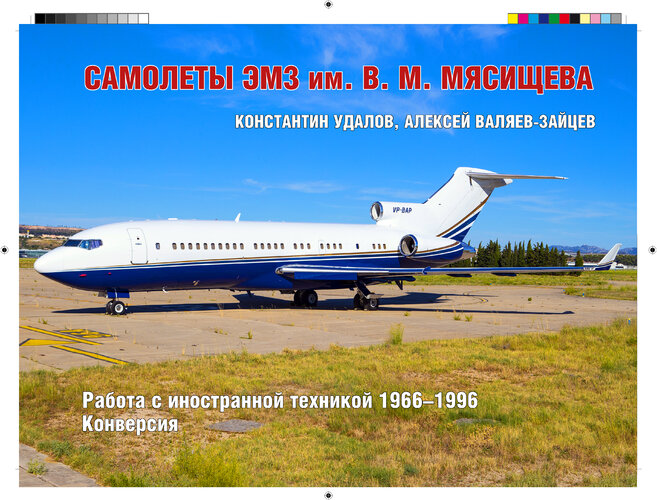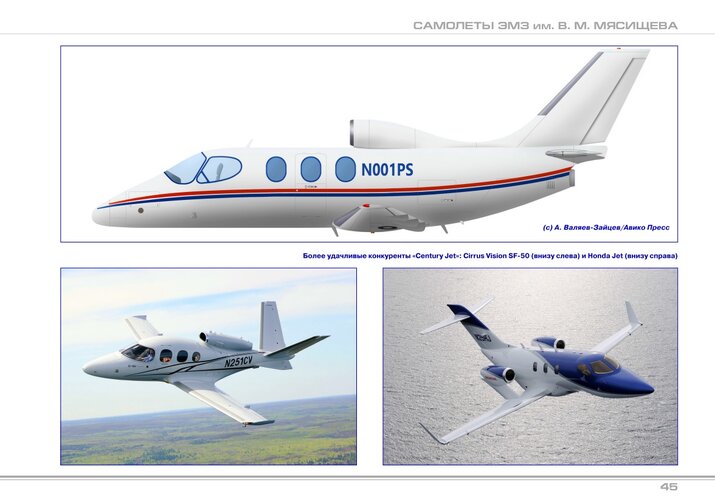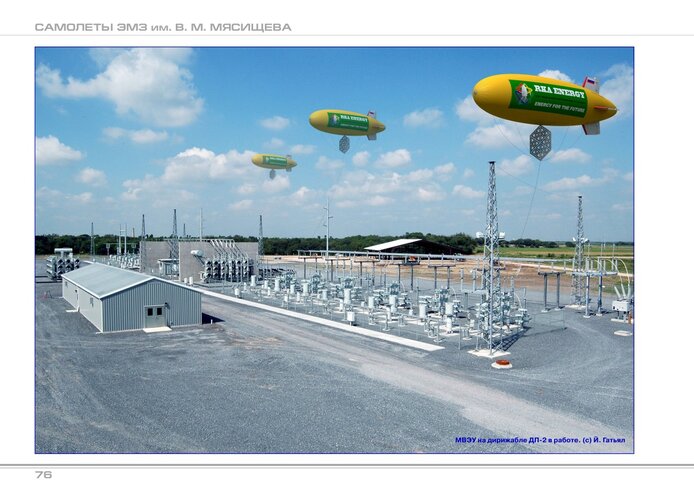gabrielorosco
I really should change my personal text
- Joined
- 10 December 2016
- Messages
- 175
- Reaction score
- 200
Hello to all friends!
Here are my impressions about the new book by our friend Konstantin Udalov (Ucon). This book is the newest of the Myasishchev Aircraft Series.
Title: Work with Foreign Aviation Technics.
Imagine a technical cooperation agreement in the aerospace field between the United States and the Soviet Union, in the middle of the Cold War. On the western side, the giant Boeing, and on the eastern side, the experienced aeronautical design office Myasishchev, both representing the pinnacle of aeronautical engineering in their respective countries. However, this does not mean that intelligence and espionage work has ceased from this moment on.
At first, this scenario sounds quite unlikely, but it actually happened, and this is just one of the incredible and unknown mysteries covered firsthand in this book, written by renowned aeronautical historian Konstantin Udalov. With the title “Common Works with Aviation Technical and Conversion – 1966 – 1996”, the work has 80 pages and is illustrated by the great 3D Artist Alexey Valyaev-Zaitsev, along with a vast archive of exclusive photos.
The first chapter of the book begins with a traditional espionage exploit. In 1970, by ministerial order, the construction of two full-size models of two iconic Western fighters was ordered, the French Dassault Mirage F-1S and the North American McDonnell Douglas F-4 Phantom II. The Myasishchev Company was tasked with building these mock-ups, based on information acquired by Soviet intelligence agencies. The objective was simple: to be photographed by the American Corona satellite, to create the impression that the Soviet Union had two important examples of these aircraft. The objectives and consequences of this work are described in detail in this chapter, complemented by high-quality photographs and images.
The second chapter reveals a new surprise, the joint project to modernize the American Boeing 727 airliner, in an unprecedented cooperation between aeronautical manufacturers that have been rivals for decades, Boeing and Myasishchev. How could these two so divergent companies be united for such a task? The answer is obviously in this book, however, I believe it is necessary to mention a sentence to contextualize the situation: fate may have made them enemies, but the necessity of the occasion brought them together, under the pretext that talent is an unquestionable ability. From this statement and with the information present in this work, this mystery will be clearly elucidated.
The third chapter brings us another major project with direct involvement from the Myasischchev Company, the modernization of the L-39S jet trainer, developed in Czechoslovakia. As the level of technology in fighter jets advanced, the demand for training jets also followed, and the solution presented was the modernization of the L-39S jet to a new level of technology. This work not only allowed a huge increase in the level of technology, but also represented significant financial savings, as there would be no need to develop an entirely new aircraft. The photos, documents and diagrams in this chapter are incredible, providing a complete overview of this project.
Through the works mentioned so far, the great versatility of the Myasishchev Company can be seen, being capable of carrying out various works in the field of aviation. However, the remaining five chapters bring us not only topics related to aircraft, but also products ranging from industrial machinery to suits capable of withstanding temperatures of up to 1,200ºC. This second part of the book continues to describe the unusual relationship of Soviet cooperation in the field of aircraft development, in particular, with the North American General Aviation Corporation and the Austrian Diamond Aircraft. In both cases, there was the joint development of light general purpose aircraft, with very promising results.
In addition to the activities mentioned above, it is worth highlighting the development of the “Pickup” System, which, as suggested by the name, literally consisted of “intercepting” in mid-flight and transporting space equipment after re-entry into the atmosphere, using helicopters. This system would provide more agility and safety in the rescue of space equipment, avoiding complex and time-consuming search, location and rescue operations for this equipment. The last chapter reveals another very different project, this time in the field of clean energy generation. Known as “Modular Wind Energy Plants”, this project sought to make wind energy generation more accessible and versatile, through the development of turbines fixed to land or airships, which could easily be relocated according to demand.
After finishing reading, it is concluded that this work fully achieved the objective of demonstrating the great potential of the Myasishchev Company in executing and conducting highly technological and diversified projects. The author's care in providing high quality material is implicit in every detail, whether in historical photos or even in the testimonies of important personalities who participated in such projects. I recommend this work not only to the public focused on the technical area, but also to those more interested in history, who will certainly see this book as a window through which it is possible to observe another chapter in the fascinating geopolitical history of the Cold War.
Here are my impressions about the new book by our friend Konstantin Udalov (Ucon). This book is the newest of the Myasishchev Aircraft Series.
Title: Work with Foreign Aviation Technics.
Imagine a technical cooperation agreement in the aerospace field between the United States and the Soviet Union, in the middle of the Cold War. On the western side, the giant Boeing, and on the eastern side, the experienced aeronautical design office Myasishchev, both representing the pinnacle of aeronautical engineering in their respective countries. However, this does not mean that intelligence and espionage work has ceased from this moment on.
At first, this scenario sounds quite unlikely, but it actually happened, and this is just one of the incredible and unknown mysteries covered firsthand in this book, written by renowned aeronautical historian Konstantin Udalov. With the title “Common Works with Aviation Technical and Conversion – 1966 – 1996”, the work has 80 pages and is illustrated by the great 3D Artist Alexey Valyaev-Zaitsev, along with a vast archive of exclusive photos.
The first chapter of the book begins with a traditional espionage exploit. In 1970, by ministerial order, the construction of two full-size models of two iconic Western fighters was ordered, the French Dassault Mirage F-1S and the North American McDonnell Douglas F-4 Phantom II. The Myasishchev Company was tasked with building these mock-ups, based on information acquired by Soviet intelligence agencies. The objective was simple: to be photographed by the American Corona satellite, to create the impression that the Soviet Union had two important examples of these aircraft. The objectives and consequences of this work are described in detail in this chapter, complemented by high-quality photographs and images.
The second chapter reveals a new surprise, the joint project to modernize the American Boeing 727 airliner, in an unprecedented cooperation between aeronautical manufacturers that have been rivals for decades, Boeing and Myasishchev. How could these two so divergent companies be united for such a task? The answer is obviously in this book, however, I believe it is necessary to mention a sentence to contextualize the situation: fate may have made them enemies, but the necessity of the occasion brought them together, under the pretext that talent is an unquestionable ability. From this statement and with the information present in this work, this mystery will be clearly elucidated.
The third chapter brings us another major project with direct involvement from the Myasischchev Company, the modernization of the L-39S jet trainer, developed in Czechoslovakia. As the level of technology in fighter jets advanced, the demand for training jets also followed, and the solution presented was the modernization of the L-39S jet to a new level of technology. This work not only allowed a huge increase in the level of technology, but also represented significant financial savings, as there would be no need to develop an entirely new aircraft. The photos, documents and diagrams in this chapter are incredible, providing a complete overview of this project.
Through the works mentioned so far, the great versatility of the Myasishchev Company can be seen, being capable of carrying out various works in the field of aviation. However, the remaining five chapters bring us not only topics related to aircraft, but also products ranging from industrial machinery to suits capable of withstanding temperatures of up to 1,200ºC. This second part of the book continues to describe the unusual relationship of Soviet cooperation in the field of aircraft development, in particular, with the North American General Aviation Corporation and the Austrian Diamond Aircraft. In both cases, there was the joint development of light general purpose aircraft, with very promising results.
In addition to the activities mentioned above, it is worth highlighting the development of the “Pickup” System, which, as suggested by the name, literally consisted of “intercepting” in mid-flight and transporting space equipment after re-entry into the atmosphere, using helicopters. This system would provide more agility and safety in the rescue of space equipment, avoiding complex and time-consuming search, location and rescue operations for this equipment. The last chapter reveals another very different project, this time in the field of clean energy generation. Known as “Modular Wind Energy Plants”, this project sought to make wind energy generation more accessible and versatile, through the development of turbines fixed to land or airships, which could easily be relocated according to demand.
After finishing reading, it is concluded that this work fully achieved the objective of demonstrating the great potential of the Myasishchev Company in executing and conducting highly technological and diversified projects. The author's care in providing high quality material is implicit in every detail, whether in historical photos or even in the testimonies of important personalities who participated in such projects. I recommend this work not only to the public focused on the technical area, but also to those more interested in history, who will certainly see this book as a window through which it is possible to observe another chapter in the fascinating geopolitical history of the Cold War.



